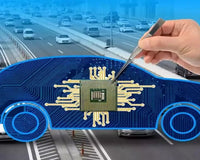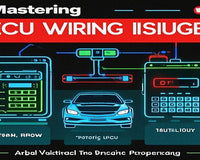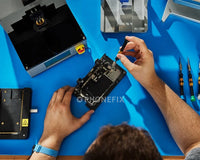BCM is the brain of car electronic systems. This sophisticated electrical component controls interior functions, including door locks, lighting circuits, windshield wipers, keyless entry system, and air conditioning controls. If your car’s electronic features have started acting up, or if random warning lights keep popping up on the dashboard, your Body Control Module (BCM) might be the culprit. However, sometimes a simple reset can fix glitches.
Over time, the BCM can develop minor software glitches—from voltage spikes, battery disconnections, or even age. These glitches don’t mean the BCM is broken; often, a reset will “refresh” its memory and resolve the issue.
When Should You Reset the BCM?
Power windows/locks working intermittently.
Interior lights staying on when they should turn off.
B-series trouble codes appearing on diagnostic scans.
Remote key fob not unlocking/locking the car.
Random warning lights that don’t correspond to a mechanical issue.
These symptoms often result from corrupted memory within the BCM rather than hardware failure, making reset procedures an effective solution.
Step 1: Gather Tools, Follow Safety Precautions & Locate the BCM.
1. BSIDE A1X Digital multimeter for voltage verification.
2. Insulated socket set for safe battery terminal removal.
3. OBD-II scanner capable of accessing body control systems.
4. ESD-safe gloves to prevent static damage.
5. Memory saver device to preserve radio and ECU settings.
6. Car trim removal tools for accessing interior panels.
Always disconnect the negative battery terminal first and wait 15 minutes for complete capacitor discharge. Carefully remove interior trim panels to expose the BCM without damaging wiring harnesses. Take photos of connector orientations before disconnection to ensure proper reassembly.
Step 2: Perform a Soft Reset.
1. Disconnect both battery cables, starting with the negative terminal.
2. Touch positive and negative cables together for 30 seconds to discharge residual power.
3. Wait 15 minutes for a complete system reset.
4. Reconnect battery cables starting with positive, then negative.
5. Start the vehicle and observe if symptoms have disappeared.
Step 3: Perform a Hard Reset with a Scan Tool.
1. Connect the V519 OBD-II scanner to the vehicle diagnostic port.
2. Navigate to BCM functions in the scanner menu.
3. Select "BCM Reset/Initialization" option.
4. Follow ignition cycle prompts displayed on the scanner.
5. Clear remaining diagnostic trouble codes.
6. Test all body functions to verify proper operation.
Step 4: Post-Reset Verification Tests.
After completing the reset procedure, systematically test all BCM-controlled functions:
1. Door locks and keyless entry system operation.
2. Interior and exterior lighting circuits.
3. Windshield wipers and washer functions.
4. Climate control and air conditioning systems.
5. Power windows and mirror adjustments.
If symptoms continue after reset attempts, it could mean the BCM needs to be reprogrammed by professional mechanic or replaced. Don’t try to open or modify the BCM yourself, this can void your warranty.
Resetting your BCM is a simple, low-cost fix for many common electronic car issues. While DIY soft resets resolve simple problems, complex BCM failures benefit from professional repair services. Regular maintenance and prompt attention to electrical symptoms help prevent BCM failures and extend module lifespan.
BCM Acting Up? How to Reset Your Body Control Module Easily at Home










